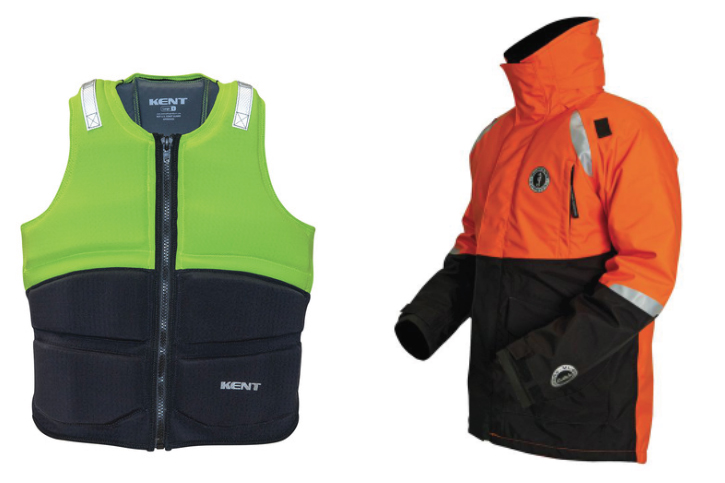According to recent figures from the National Institute of Occupational Safety and Health, drift gillnetting for salmon is currently number one in fatalities in Alaska, with most deaths caused by falls overboard.
Not like we do not all know this, but most fatalities could be avoided by the consistent use of PFDs. And of course we all know the counter arguments, especially in drifting. The snag points that most PFDs add make it difficult to work around nets, but there are options.
The Kent Rogue or Rogue II are the most unobtrusive vests with the fewest snags. These neoprene flotation vests are not Coast Guard-approved and will not keep you afloat all night or buoy you if you bonk your head, but it has 12 pounds of flotation and can save lives by providing enough flotation to shed heavy raingear. It can easily be worn under a coat and is actually a nice core layer on cold, stormy nights when danger of swamping or stumbling is high.
The newer inflatables offer far more buoyancy and are getting better at reducing snag points. They work well for setnetting and can at least be a good option for skippers or for delivering. Mustang Survival sets the bar here, with a number of designs that have Coast Guard approval and either inflate manually, automatically when immersed in water, or a combination of the two. The new MIT 70 Automatic Inflatable PFD from Mustang is especially spare and provides 15.7 pounds of flotation.
Mustang’s Khimera line was originally developed for paddle sport and is a good option. Because they are made for paddling, the Khimera PFDs are low profile, with big arm holes and general ease of movement. They combine 7.5 pounds of foam flotation with another 13 pounds when inflated and are very wearable.
Mustang has also revamped its float coat with the new Catalyst Flotation Jacket. At $369.99, it is an investment, but a worthy one. Not only does it provide 15.7 pounds of flotation, it is also warm and waterproof, with features like hand warmers and an integrated hood.







